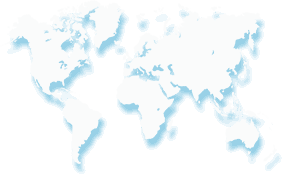Electrodeionization, also referred to as Continuous Electrodeionization (CEDI) and Continuous Deionization (CDI), is a chemical-free technology that significantly reduces ions in water. CEDI uses cation and/or anion exchange resins that are continuously regenerated by an electrical current. EDI modules, also called “stacks,” consist of cell pairs with each pair containing an anode and cathode on separate sides. Each cell consists of a frame onto which are bonded a cation-permeable membrane on one side, and an anion-permeable membrane on the other.
The space in the center of the cell, between the ion-selective membranes, is filled with a thin bed of ion exchange resins. The cells are separated from one another by a screen separator. The feed water entering the module is split into three parts. A small percentage flows over the electrodes, 65-75% of the feed passes through the resin beds in the cell, and the remainder passes along the screen separator between the cells.
The cation and anion exchange resins capture dissolved ions in the feed water at the top of the cell. Electric current applied across the module pulls those ions through the ion-selective membrane towards the electrodes. Cations are pulled through the cation-permeable membrane towards the cathode, and anions through the anion-selective membrane towards the anode. These ions, however, are unable to travel all the way to their respective electrodes since they come to the adjacent ion-selective membrane which is of the opposite charge. This prevents further migrations of ions, which are then forced to concentrate in the space between the cells. This space is known as the “concentrate” channel, and the ions concentrated in this area are flushed out of the system to the drain.
The channel running through the resin bed in the center of the cell is known as the “dilute” channel. As water passes down this channel, it is progressively deionized. At the lower end of the dilute channel, where water is free of ions, splitting of H2O occurs in the electric field. This generates H+ and OH- which regenerate the ion exchange resins, effectively eliminating chemical regeneration.
Benefits
- Removes dissolved inorganics effectively, allowing resistivity above 5 MΩ • cm @ 25 °C to be reached (which corresponds to a total ionic contamination level in water of approximately 50 ppb).
- Environmentally friendly.
- No chemical regeneration.
- No chemical disposal.
- No resin disposal.
- Low energy consumption.
- Inexpensive to operate.
- Safe: no heating element.
Limitations
- Removes only a limited number of charged organics.
- Requires feed by good quality water (for instance, reverse osmosis-treated water) for economically efficient operation.
Ultrapure Water via Electrodeionization
Continuous electrodeionization is often used as a key part of a larger ultrapure water system. Ultrapure water systems typically utilize reverse osmosis in combination with electrodeionization, which provides a completely chemical-free solution for water treatment that is ideal for a number of applications including:
- power generation;
- boiler feed water;
- semiconductors;
- electronics;
- food and beverage; and
- pharmaceuticals.
Pretreatment Design
Early on, EDI installations were fraught with operational problems due to failure to fully appreciate the adverse effects posed by many common water contaminants on the selective membranes, mixed bed resin or the electrical components (anode and cathode). The resin and membranes are subject to fouling from hardness, organic carbon (TOC), iron, manganese, oxidizing species (e.g., chlorine, ozone), particulates / suspended solids and carbon dioxide. Reverse osmosis is almost always required as pretreatment upstream of EDI.
WaterProfessionals® have experience in determining if CDI makes sense in your process and to constructing a system inclusive of necessary pretreatment to assure minimal maintenance.

